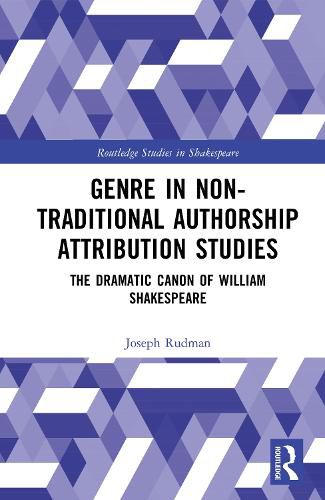Readings Newsletter
Become a Readings Member to make your shopping experience even easier.
Sign in or sign up for free!
You’re not far away from qualifying for FREE standard shipping within Australia
You’ve qualified for FREE standard shipping within Australia
The cart is loading…






This timely monograph explores the critical, yet often overlooked, role of genre in non-traditional authorship attribution studies. Drawing from linguistics, rhetoric, stylistics, forensic linguistics, and computational methods-including Large Language Models (LLMs)-the book argues that genre must be treated as a central variable in any credible attribution analysis.
Across domains from Shakespearean drama to courtroom linguistics, the book highlights how failing to control for genre risks undermining both results and credibility. It challenges the extremes of current thinking-whether genre dominates authorship or is eclipsed by it-by examining the vast and complex gray area between these poles.
With case studies, critical commentary, and a detailed appendix cataloging over 120 stylistic markers across genres and authors, this work provides a robust resource for scholars, digital humanists, forensic linguists, and anyone invested in the integrity of authorship studies. It also offers an accessible introduction to the promises and pitfalls of LLMs in this evolving field. This volume is essential reading for both practitioners and consumers of attribution research.
$9.00 standard shipping within Australia
FREE standard shipping within Australia for orders over $100.00
Express & International shipping calculated at checkout
Stock availability can be subject to change without notice. We recommend calling the shop or contacting our online team to check availability of low stock items. Please see our Shopping Online page for more details.
This timely monograph explores the critical, yet often overlooked, role of genre in non-traditional authorship attribution studies. Drawing from linguistics, rhetoric, stylistics, forensic linguistics, and computational methods-including Large Language Models (LLMs)-the book argues that genre must be treated as a central variable in any credible attribution analysis.
Across domains from Shakespearean drama to courtroom linguistics, the book highlights how failing to control for genre risks undermining both results and credibility. It challenges the extremes of current thinking-whether genre dominates authorship or is eclipsed by it-by examining the vast and complex gray area between these poles.
With case studies, critical commentary, and a detailed appendix cataloging over 120 stylistic markers across genres and authors, this work provides a robust resource for scholars, digital humanists, forensic linguists, and anyone invested in the integrity of authorship studies. It also offers an accessible introduction to the promises and pitfalls of LLMs in this evolving field. This volume is essential reading for both practitioners and consumers of attribution research.